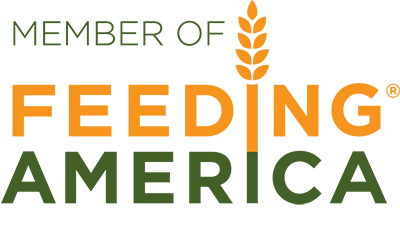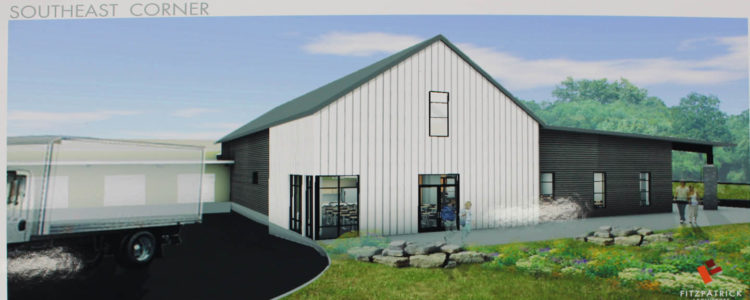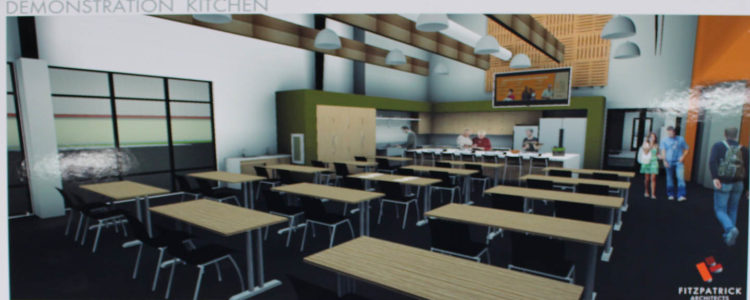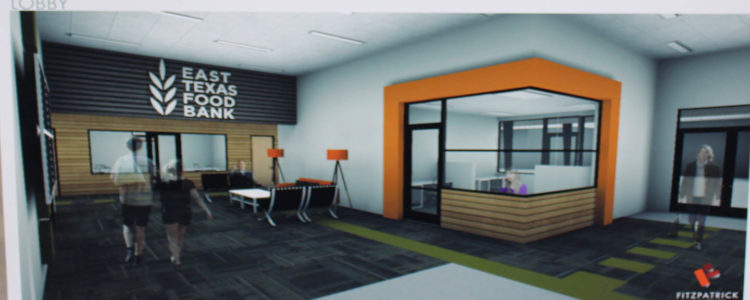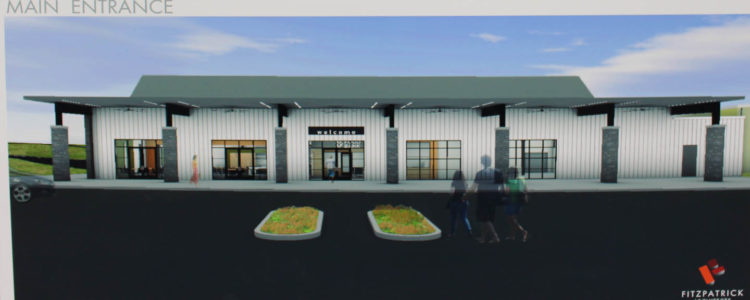More Space More Meals
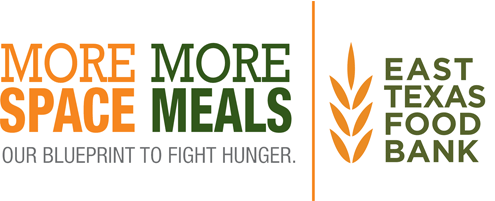
More Space. More Meals. is a multi-faceted expansion project that will increase the East Texas Food Bank’s distribution capacity, improve workplace and food safety, increase community engagement, and promote client empowerment. These objectives will be accomplished through four major capital improvement:
- The construction of a new Volunteer Center.
- The construction of a Nutrition Education Center.
- The expansion of the existing Cold Dock area.
- The improvement of existing warehouse storage areas.
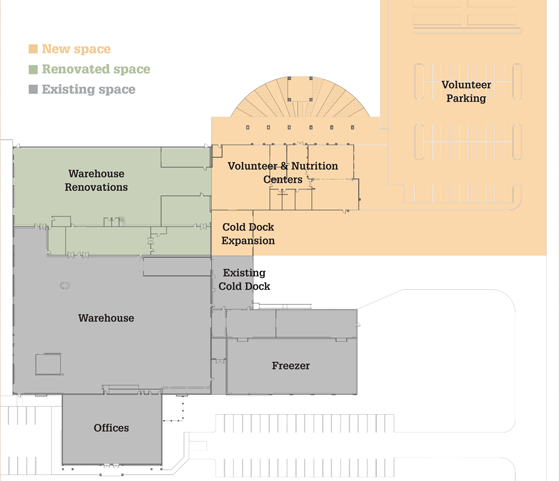
Volunteer and Nutrition Centers
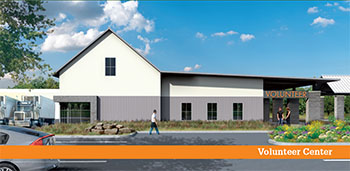
Volunteers are vital to ETFB’s work and mission. Without these dedicated individuals, we would not be able to feed the hungry throughout our service area. Volunteers perform a variety of tasks, including sorting, inspecting, packing, and loading donated food items; repackaging bulk products; packaging bags of food for our BackPack Program and Senior Servings Program; assembling boxes of food for our Senior Box Program and Mobile Pantry Program, and many other tasks. Each year, more than 10,000 individuals volunteer, donating more than 57,000 volunteer hours, at a value of over $1.2 million (per Independent Sector).
Although our Volunteer Program has been tremendously successful, the current layout of our distribution warehouse, including the Volunteer Center, presents several significant challenges and barriers to the effectiveness and growth of our Volunteer Program, which, in turn, limits our overall distribution capacity.
Currently, the volunteer parking lot and entrance are on the opposite side of the warehouse from the Volunteer Center. Volunteers must cross the warehouse, passing the loading docks and walking through the area where food orders are staged for partner agencies. These areas are often congested with warehouse staff operating forklifts, and partner agency representatives picking up their food orders. This creates a potential safety hazard for our volunteers, and also slows down daily operations. Additionally, volunteers must park in the same area where partner agency representatives drive through to reach the loading docks, which often creates traffic jams.
To eliminate these potential safety hazards and improve warehouse workflow, ETFB will construct a new Volunteer Center, including a dedicated volunteer parking lot, leading directly into the new Volunteer Center. This lot will also provide bus parking for large groups.
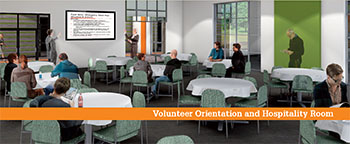
Currently, there is a small section of ETFB’s warehouse that serves as a break area for volunteers, with tables, chairs, and various supplies. This creates a food safety issue, because food is consumed by volunteers in the warehouse, where production occurs. The area is not sufficient to accommodate large volunteer groups, and there is not sufficient space for volunteer training and orientation. The new Volunteer Center will include a Volunteer Orientation and Hospitality Room. This room will also be used to host corporate meetings, community groups, and other events, providing an opportunity to engage more people in ETFB’s work through mission-oriented messaging and learning opportunities.
ETFB purchases staple food items such as rice, beans, and pasta in one-ton tote bags, and relies on volunteers to repackage them into sizes suitable for distribution by partner agencies. ETFB also relies on volunteer groups to help package food for our targeted feeding programs, such as the BackPack Program, Senior Servings, Senior Box Program, and Mobile Pantry Program.
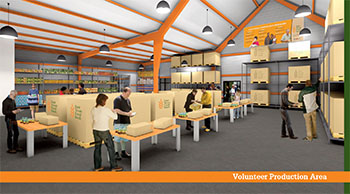
At this time, ETFB’s limited space is ineffective for utilizing large groups to accomplish these tasks, so any large assembly lines must be set up in an area of the warehouse where other tasks are being completed. The new Volunteer Center will include a much larger dedicated volunteer sorting and repack area, which will significantly increase our ability to safely repackage bulk products. It will also include a large Volunteer Production Area, which will provide much needed space for large volunteer groups to assemble kits and boxes for our targeted feeding programs.
ETFB recognizes that it is not only important to feed those in line, but also to shorten those lines by attacking the underlying causes of hunger and poor nutrition by implementing holistic strategies that help support the self‐reliance of the low-income population we serve. Many of these clients often do not have adequate knowledge of nutrition and healthy foods. We need to empower our clients, providing the tools and resources they need to eat healthy.
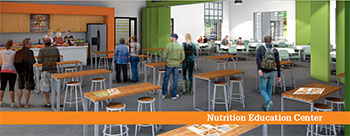
ETFB’s Nutrition Education Program promotes long‐term solutions to hunger and poor nutrition by providing classes to low-income East Texans, which are designed to help them make informed food choices and adopt healthy eating and active lifestyles. Our nutritionists teach classes throughout East Texas utilizing nationally recognized nutrition curricula, such as Share Our Strength’s Cooking Matters® and Project Strength, which include lessons on nutrition, food safety, smart shopping, eating on a budget, meal planning, and other topics.
ETFB will construct a new Nutrition Education Center which includes dedicated office space for ETFB’s nutritionists, as well a meeting room with a demonstration kitchen, where our nutritionists can provide classes to low-income individuals on site at ETFB. These classes can also be filmed and posted to ETFB’s website.
Cold Dock Expansion
The Retail Store Donation Program is one of the primary ways ETFB collects donated food. Through this program, we send refrigerated trucks to retail grocery storesthroughout our service area to pick up food donations, including perishable products that are nearing their sell-by date but are still safe to eat.
Currently, ETFB’s warehouse has a refrigerated cold dock area, with three dock doors, which is used to unload large food donations from our eighteen-wheeler trucks, or to load food for delivery to partner agencies in outlying counties. Food collected through the Retail Store Donation Program must be unloaded in the dry dock area, so that it can be weighed on the scale in that section of the warehouse, which creates several issues:
- This process breaks the “cold chain” for refrigerated and frozen foods, which comprise a significant portion of the food collected through the Retail Store Donation Program. Breaking the cold chain can potentially compromise food safety.
- Unloading refrigerated and frozen items on the dry dock is an inefficient process, since these items must be transported to the other side of the warehouse after they are weighed and sorted. Efficient, timely processes are crucial for these food items because most are nearing their sell-by date, and must be made available for distribution to agencies as soon as possible.
- At this time, Retail Store Donation Program truck drivers must unload in the same area of the warehouse where agencies are picking up food orders, which can impede the flow of traffic, and slow down the process of unloading the trucks.
- Having to utilize the dry dock area for unloading Retail Store Donation Program trucks takes up valuable dock and warehouse space that could be utilized for other purposes. There are a total of six dock doors in this area, and two of them are currently being used to unload product donated from retail stores.
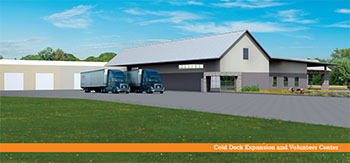
To address these issues, ETFB will expand the Cold Dock area, adding three additional dock doors and a new scale for weighing food donations. This will create more space and enable more efficient processes, which will increase the collection capacity of the Retail Store Donation Program, and facilitate continued program growth in future years.
Expanding the Cold Dock area will allow ETFB’s Retail Store Donation Program trucks to be unloaded directly onto the Cold Dock. This will improve food safety by preserving the cold chain for refrigerated and frozen products, since they can be weighed and sorted right there in the cold dock area, and moved directly into the cooler or freezer areas of the warehouse, which are immediately adjacent to the Cold Dock. The Cold Dock expansion will also enable our drivers to unload trucks in approximately half the time. This increased efficiency will allow us to move perishable products as quickly as possible. Furthermore, since trucks will no longer be unloaded in the dry dock area, this will reduce congestion from rolling stock traffic lanes in the warehouse, and these trucks will no longer have to drive in the same area where agencies are picking up orders. This will also free up the two dry dock doors that are currently used by the Retail Store Donation Program trucks.
Additional Warehouse Improvements
ETFB receives food donations from a variety of sources, including food drives, retail stores, wholesalers, manufacturers, and individuals. These items must be sorted, inspected and cleaned before they are available for distribution to partner agencies. Items that have not yet been inspected and cleaned must be stored separately from those that have been inspected to ensure proper food safety. Currently, ETFB’s warehouse does not have enough dedicated storage space for uninspected items.
The More Space. More Meals. project will include the construction of a Donated Product Receiving Area, where donated food items from all sources, including dry goods from the Retail Store Donation Program, will be temporarily stored and sorted. This will help ensure proper food safety procedures in the warehouse and will contribute to greater organizational efficiency.
The project will also include the addition of a new pallet flow racking system in the warehouse for storing finished product, BackPack kits, and boxes that have been assembled by volunteers for the Senior Box Program and Mobile Pantry Program. The pallet flow racking will help ensure a “first in, first out” system, so that the oldest product can be pulled first for order fulfillment, rather than being pushed further back when newer product is stored. This will help ensure that food does not go to waste.
